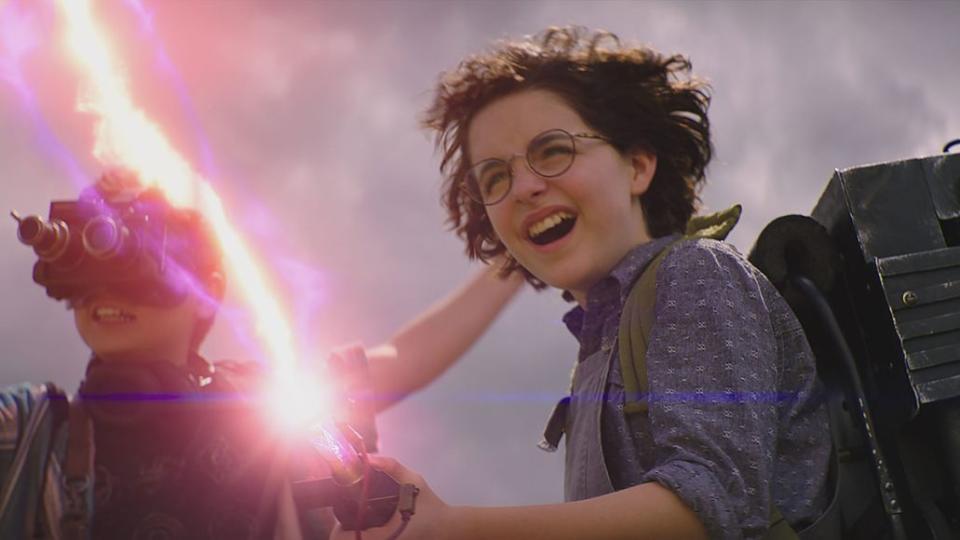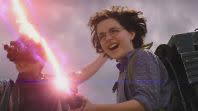Ghostbusters: Afterlife Went Too Far With Its Most Unsettling Cameo
- Oops!Something went wrong.Please try again later.
- Oops!Something went wrong.Please try again later.
- Oops!Something went wrong.Please try again later.
The post Ghostbusters: Afterlife Went Too Far With Its Most Unsettling Cameo appeared first on Consequence.
[Editor’s note: The following contains spoilers for Ghostbusters: Afterlife.]
Jason Reitman’s Ghostbusters: Afterlife is packed with callbacks to the original 1980s films, not just drawing upon the iconography established by Reitman’s father but also bringing back much of the original cast, including Bill Murray, Dan Aykroyd, and Ernie Hudson. It also chose to pay tribute to the fourth member of the Ghostbusting team, actor and filmmaker Harold Ramis — but went too far in doing so.
As Egon Spengler, Ramis was one of the original film’s most memorable characters, and Ramis also had a long and fruitful career as a director of films including Caddyshack and Groundhog Day; he died in 2014 at the age of 69 after an illness, and Afterlife is dedicated to his memory. Which is fitting, given that much of Afterlife is literally haunted by the presence of Egon, whose ghostly presence makes itself known in multiple scenes, as his estranged family explores the farmhouse and workshop he left behind after his passing in the opening sequence of the film.
Although it’s a bit disconcerting that young Phoebe (Mckenna Grace) is relatively blasé about the discovery that her ghostly grandfather is playing chess with her (after all, man, she’s a scientist), the practical and digital effects used to create the sense of Egon’s presence have plenty of charm to them.
Ghostbusters: Afterlife (Sony Pictures)
Well, charm, but also a decidedly bittersweet component — after all, this ghost is trying to connect with the family he’d left behind well before his death, a complicated emotional undercurrent that a better film would explore more honestly, and here gets brushed aside for the big emotional reveal: a fully rendered CGI ghost version of Ramis, who appears during the film’s final showdown with the newly resurrected Gozer to help his old friends save the world, and hug his daughter (Carrie Coon) one last time before evaporating into stardust.
Ghostbusters: Afterlife Is Too Haunted By the Past to Feel Fresh: Review
For years now, advancements in digital technology have been used to ensure that the dead don’t stay truly dead — or at the very least, that the death of an actor doesn’t preclude their future appearances on screen. The Star Wars universe features perhaps the most notable instances of this, with Peter Cushing’s likeness being used in 2016’s Rogue One despite his having passed away in 1994. It’s a reality every actor who joins a major franchise has to face these days, as Solo: A Star Wars Story star Donald Glover told The New Yorker in 2018:
“I’m scanned into Star Wars now, my face and body,” he told me. “Who’s to say that at some point they won’t take that scan and say, ‘Let’s make another movie with Donald. He’s been dead for fifteen years, but we can do whatever we want with him.’”
It’s a beautiful thought, the idea that those we’ve lost can be found again, but even in a film so embedded in the fantastical, creating a real-life digital specter simply crossed the line. The most terrifying moment in Afterlife wasn’t anything spook-related. Instead, it was the horror of potentially seeing this CGI puppet talk. Thankfully, Ghost Egon remains silent, which at least represents a little restraint — though not enough to avoid this scenario entirely, and let the character remain a true ghostly presence without the blunt blow of his digitally-enabled reappearance.
Everything up to the point of showing Ramis’ actual digitally reconstructed face was actually pretty powerful. But the reveal of digitally aged Egon, coming as it does during the literal heart of the film’s climax, ended up feeling more like a cheap shortcut to emotional resolution rather than an authentically earned moment. Death needs to have meaning — to treat it like a problem that can be solved with a few hundred thousand dollars worth of VFX strips it of that.
Reitman has said in interviews that he had permission from the Ramis family to use his likeness for the ghostly climax. But to quote another great silver screen scientist, “Your scientists were so preoccupied with whether or not they could, they didn’t stop to think if they should.”
Ghostbusters: Afterlife is in theaters now.
Ghostbusters: Afterlife Went Too Far With Its Most Unsettling Cameo
Liz Shannon Miller
Popular Posts
Kim and Pete Hold Hands, Confirm Romance in Vicious Attack on Kanye West
Brass Against Onstage Urination Incident Leads to Police Report as More Details Emerge
Brass Against Singer Urinates on Fan's Face Onstage During Festival Performance
Britney Spears Rips Christina Aguilera for Silence on Conservatorship
Ghostbusters: Afterlife Went Too Far With Its Most Unsettling Cameo



